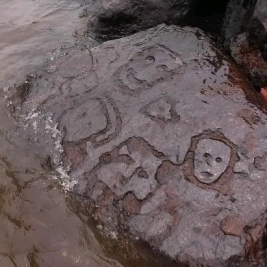In a remarkable revelation, millennia-old rock engravings have resurfaced along a riverbank, a rare sight brought about by a profound drought that has lowered the river to its lowest level in 121 years.
These usually submerged etchings, some of which resemble human expressions, have been unveiled due to soaring temperatures and a marked absence of rainfall. Situated at the confluence of the Rio Negro and the Amazon River on the outskirts of Manaus, Brazil, these petroglyphs have come to light during the city’s most severe dry spell in over a century.
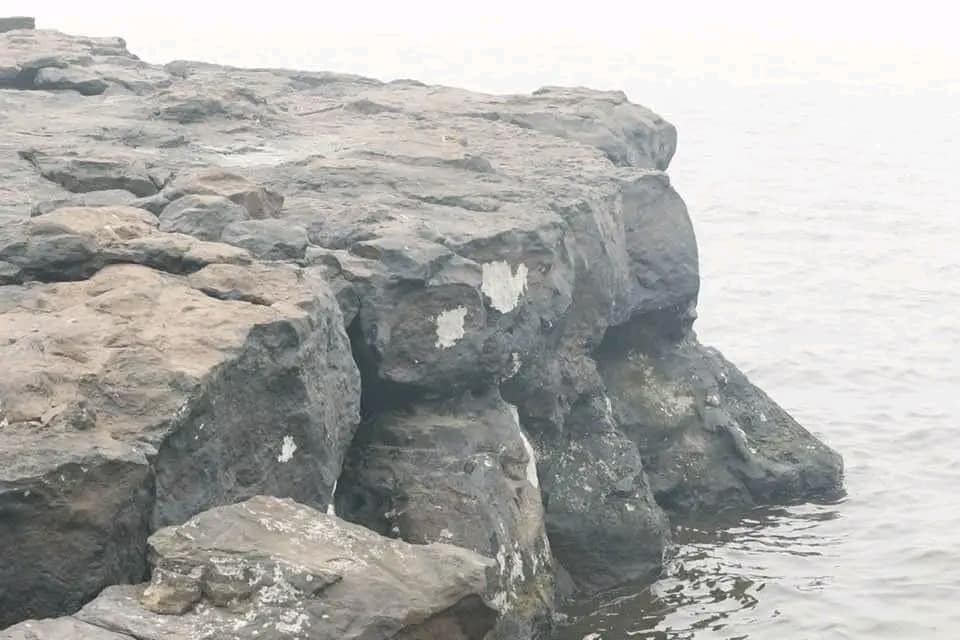
Remarkably, these engravings have only been seen once before, briefly visible during a drought in 2010. Experts estimate that these petroglyphs at the Lajes archaeological site date between 1,000 and 2,000 years ago. Despite being protected by the state, archaeologists have never had the opportunity to conduct a thorough study of these engravings, referred to as “cares.”
While the term “carnitas” translates to “little faces,” the site also features petroglyphs of animals and representations of water. Beneath the river’s surface, more engravings are likely waiting to be exposed as the drought persists.
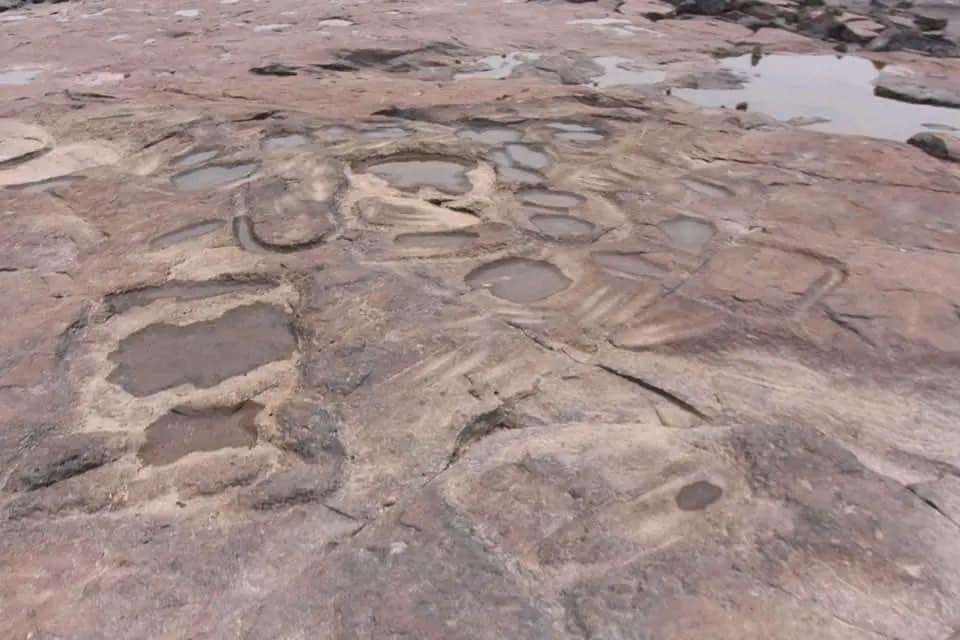
Archaeologist Jaime Oliveira shared insights: “The archaeological sites we have observed here represent evidence of occupation that provides important insights into the societies that lived in this place. These groups also went through periods of drought more severe than what we are experiencing now. How can we tell? Just by looking at where we are, this place is submerged at the normal water level. We can conclude that to create these engravings, the river was dry or may not have even existed.”
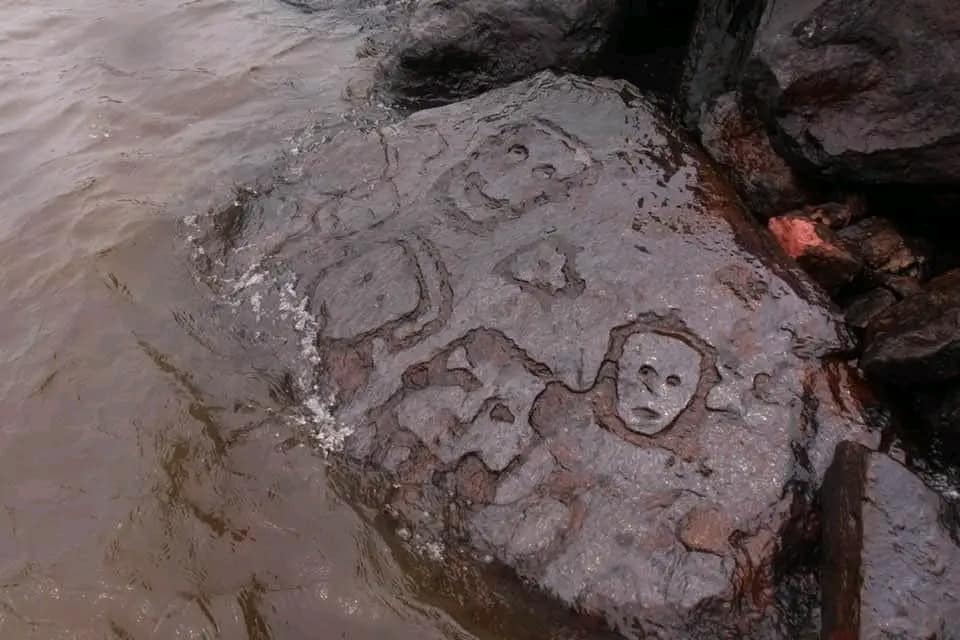
Oliveira further explained that the petroglyphs, characterized as “complex graphic art,” are believed to have been created using stone axes and chipped with precision. He noted the emotional depth of these human figures, which convey various feelings, from joy to sorrow. “As we can see, some are smiling, and others appear despondent. We can even say that the engravings represent a state of mind and reflect a bit of what they experienced during that period.”
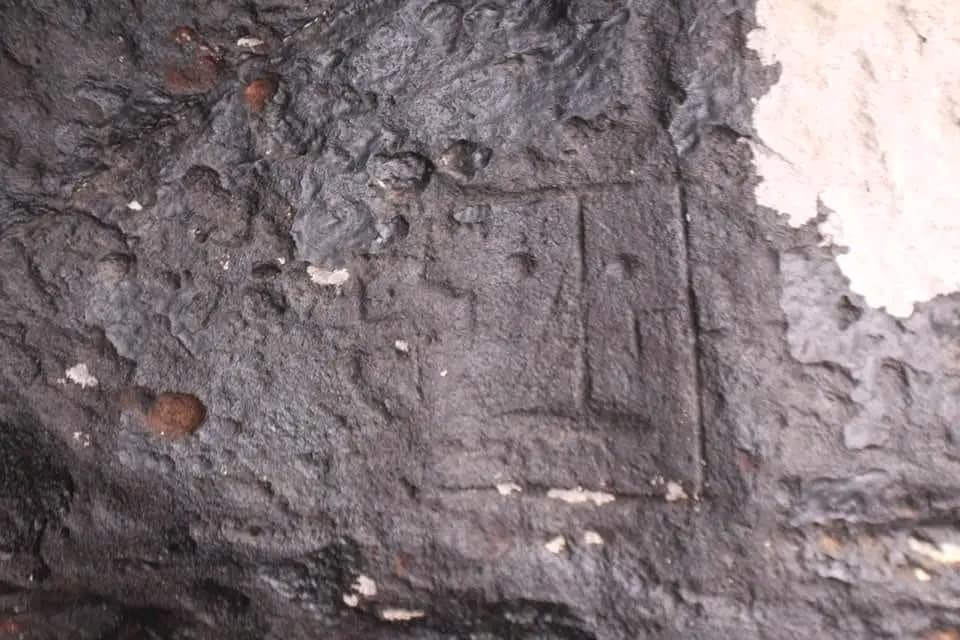
Officials from the Geological Survey of Brazil predict that the Rio Negro may only begin to rise again in November, leaving the ancient engravings briefly exposed, allowing a glimpse into the distant past of this intriguing region.
Disclaimers:
This content and images have been licensed to use by Jam Press, edited and syndicated by https://www.znewsservice.com/.
Should you have any questions relating to this content please get in touch with Jam Press via https://www.jampress.co.uk/contact-us/

